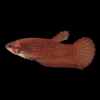To provide the best experiences, we use technologies like cookies to store and/or access device information. Consenting to these technologies will allow us to process data such as browsing behaviour or unique IDs on this site. Not consenting or withdrawing consent, may adversely affect certain features and functions.
The technical storage or access is strictly necessary for the legitimate purpose of enabling the use of a specific service explicitly requested by the subscriber or user, or for the sole purpose of carrying out the transmission of a communication over an electronic communications network.
The technical storage or access is necessary for the legitimate purpose of storing preferences that are not requested by the subscriber or user.
The technical storage or access that is used exclusively for statistical purposes.
The technical storage or access that is used exclusively for anonymous statistical purposes. Without a subpoena, voluntary compliance on the part of your Internet Service Provider, or additional records from a third party, information stored or retrieved for this purpose alone cannot usually be used to identify you.
The technical storage or access is required to create user profiles to send advertising, or to track the user on a website or across several websites for similar marketing purposes.
















Emily Parker (verified owner) –
I recently purchased a pair of Betta Persephone, and I couldn’t be happier with my decision! As a caring fish parent, I always prioritize the health and happiness of my aquatic friends. This pair has been thriving in my planted aquarium for over a month now. Their colors are breathtaking, with the male showing a vibrant blend of blues and greens, while the female has beautiful, subtle hues that really stand out against the lush aquatic plants.
I love how these Bettas are relatively peaceful compared to other betta varieties. They coexist harmoniously, which has been a refreshing change from some of the more aggressive counterparts I’ve owned in the past. One minor concern is that they can be shy initially; it took a few days for them to explore their new home, but now they’re quite active and love darting around the plants.
If you’re looking to add a stunning pair of aquarium fish to your setup, I highly recommend the Betta Persephone. They not only bring beauty but also a sense of tranquility to your tank. Just ensure you have plenty of hiding spots and plants to make them feel secure. I will definitely buy more from this seller in the future!